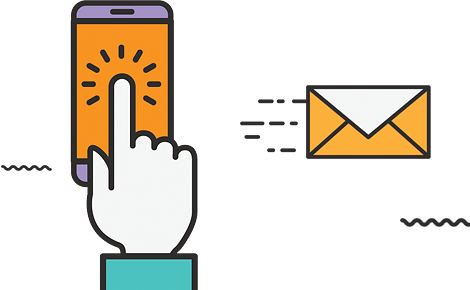Graphic design combines photography, illustration, typography, and motion graphics to create visually appealing pictures that attract attention, sell products and services, and expand market opportunities. To put it another way, graphic design is beneficial to your company in a variety of ways.
- Leads to greater efficiency and productivity
A solid brand identity underpins all pleasant, healthy workplaces. Employees are proud to be a part of and embrace the organization’s brand. As a result of their buy-in, employees are happier and more productive. By expressing a firm’s mission, good graphic design cultivates a favourable brand identity that extends from company websites and communications to business cards and employee attire. Also true is the inverse. If you’ve ever worked at a company with a poorly designed website that’s difficult to read, browse, search, or buy from, you know how aggravating and unpleasant it can be for both employees and irate consumers. Why should your customers be any different if your staff don’t like your company logo or website?
- Helps you save time
Which record designs do you need for your site photographs and pictures: JPG, TIF, EPS, PDF, or GIF? Do you have any business cards? For the greatest outcomes, a graphic designer knows which file format to use and when to utilise it. The same applies for RGB vs. CMYK shading modes, paperweights and utilizations, CMS types, and in the event that your web or magazine promotion is scaled accurately and has sufficient shading difference to be meaningful when it’s distributed. Graphic design specialists know all of this thanks to their extensive training, mastery of industry tools, and years of hands-on experience, so you don’t have to waste time trying to figure it out yourself.
- It is cost-effective.
Even if you have a little marketing budget, investing in effective graphic design pays off. Cheap design is frequently synonymous with poor design. Illustrations that are inadequately planned may likewise be exorbitant. That might appear to be perplexing, however assuming you don’t employ a capable visual fashioner, you could wind up with an item that doesn’t print well, is costly to print in light of shading the executives or format issues, or isn’t organized as expected for print or online circulation. Changes, delays, and updates generally cost cash, so that minimal expense publicly supported logo might wind up setting you back more than one from a more costly master visual originator.
- Viewers are more likely to interact with content if the images are of high quality
Do you want to improve the number of views, shares, and followers on your company’s social media accounts? What about product sales and clientele? Whether it’s for e-newsletters and websites, blogs and social media, or printed materials, high-quality pictures attract far more attention than apps that rely on low-quality, stock, or non-existent imagery. To build more effective marketing products, graphic designers use high-quality photography, infographics, illustrations, and video.
- Graphic communication is more than just a trend.
Companies now have only a few seconds to attract and hold viewers’ attention to maintain marketing efforts effective in the face of this cultural shift. The use of images is the ideal solution. They can convey complicated messages far more quickly than words. However, photos must be distinctive, relevant, and high quality to achieve this—as well as to boost your attractiveness to automated audiences (search engines) to optimise your online rankings. Graphic design may assist your company in making the move to this new era of succinct, high-speed communication.
Graphic design gives your brand a distinct “face” that helps to distinguish and promote your business. Because you are the only provider in town, you may be able to get away with poor graphic design and branding if you have no competition. For the rest of us, though, high-quality branding is critical to realising our full potential and achieving our goals.
Traditional vs. trendy, serious vs. fun, powerful vs. laid back, etc.—your company logo, typeface, colours, website layout, and marketing materials create an immediate sense of what your firm is like.
Make sure your graphic design identity is used consistently throughout your organisation in internal/external communications, marketing and advertising materials, websites, and goods because “consistent” indicates “reliable.” Inconsistency in your business apps, such as employing several variations of logos, typography, and colours, will make your organisation appear sloppy and unprofessional.
What are you waiting for now that you know more about the advantages of graphic design? To bring extra value to your next graphic design, brand development, or marketing project, contact Merrakle media for proper guidance.




